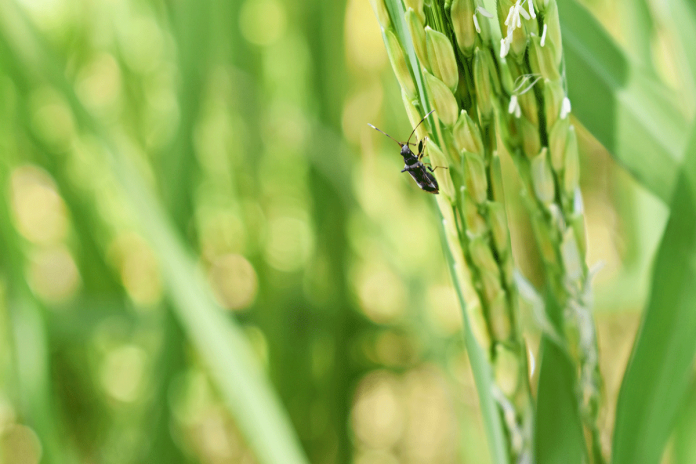
ILOILO City – The Department of Agriculture (DA) Western Visayas and the municipal government are on guard amid the rice grain bug (RGB) infestation sighted in 548 hectares rice areas in Barbaza, Antique which resulted in the decline in palay production yield and quality in the 14 affected barangays.
“The rice grain bug as a grain feeding pest causes more serious damage to rice than the rice bug or ‘tiangaw’. It is a small but very fast-moving insect. It attacks during the flowering up to the milking stage of the rice plant. Based on the pest monitoring report submitted by the Municipal Agriculture Office (MAO) of Barbaza, infestation here already reached the outbreak level,” said DA-Western Visayas Regional Crop Protection Center (RCPC) chief Ryan Rasgo.
Formerly tagged as the “new pest of rice”, the first RGB incidents in the region were recorded in Sipalay and adjacent towns in Negros Occidental back in 2017, and similar pest infestation also occurred in the 10-hectare rice fields in Janiuay, Iloilo late last year.
Municipal agriculturist Juan Marquez Jr. said rice growers in the barangays of Beri, Binangbang Centro, Binanu-an, Cadiao, Capoyuan, Esparar, Gua, Igpalge, Ipil, Jinalinan, Mablad, Magtulis, Mayos, and Palma experienced up to 90 percent of crop losses due to rice grain bug infestation.
Jimmy Necor, a hybrid rice farmer in Brgy. Capoyuan said “agtong una, nakalab-ot pa sa 92 ka sako ang napatubas ko sa 0.7 ka ektarya, sang nagpameste ang rice grain bug, 34 na lang ka sako ang akon nalimpyo. Naga-kupos ang uhay kang paray kag naga-itom ang kahoy. Mapait pa dayun ang tinig-ang.”
The significant crop damage prompted the municipal agriculture office to seek technical assistance and interventions from DA to mitigate the spread of pest damage which might lead to supply instability of rice if the infestation persists.
“We recommend the use of biological control agents and the practice of Integrated Pest Management. However, we are urging our rice farmers to observe fallow period and synchronous planting to break the pest cycle,” said Rasgo.
Flooding the newly harvested rice field is another useful method to eliminate or at least minimize the RGB population, according to Rasgo.
“If we will not take our aggressive move on this matter, the pest incidents might progress towards the end of the third cropping. We need to stop the rice grain bug especially that the DA’s 100-hectare community rice model farm will be established within the infested barangays in June,” said Marquez.
To alert farmers on the measures to undertake to eradicate the crop pest as immediately as possible, DA and MAO Barbaza will embark on an intensive information drive on RGB among farmers.
Rasgo and Regional Information Officer James Earl Ogatis, who validated the infested areas on Feb. 23, have turned over biological control agents such as metarhizium and beauveria fungi as well as fungicides to Mayor Gerry Necor and Marquez.
Moreover, agricultural extension workers in the region are advised to hold constant monitoring activities to allow early detection and appropriate management of crop pests.
Rasgo also emphasized that the use of synthetic chemicals to destroy the RGB hosts should be treated as the last resort. (SMHToreno/DA-RAFIS 6)



